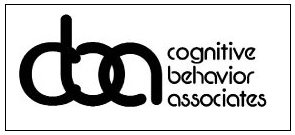Children suffer from mental and emotional distress at alarming numbers:
- 9.4% of children between the ages of 2 and 17 are diagnosed with ADHD (6.1 million children)
- 7.4% of children between the ages of 3 and 17 are diagnosed with behavioral problems (4.5 million children)
- 7.1% of children between the ages of 3 and 17 are diagnosed with an anxiety disorder (4.4 million children)
- 73.8% of children between the ages of 3 and 17 with depression also experience anxiety and 47.2% experience behavior problems
Cognitive Behavioral Therapy for children (CBT-C) is just as effective as CBT for adults. However, there are some significant differences to be taken into consideration. Younger children, between the ages of 5 and 12, typically require more parental involvement in therapy, as well as a more kid-friendly approach involving the use of play activities in therapy. Older children, between the ages of 13 and 17, may be able to participate in a more adult like therapy without play. Regardless of the age, all children participating in CBT-C will learn how to identify their thoughts and emotions so they may use this new skill set to change behavior and promote confidence and self-esteem.
Cognitive Behavioral Therapy for children (CBT-C) considers the age of the child, the maturity of the child, and the emotional needs of the child. Whether the child is depressed, anxious, hyperactive, disruptive, or has experienced a loss or a trauma, CBT-C teaches each child to identify thoughts (cognitions), emotions, and behaviors and how they are all linked together. Typically, the child, along with their parents and therapist, establish and agree upon goals for therapy. Children often overlook what their strengths are and the therapist will begin by helping the child identify what they are good at, how that makes them feel, and how to use the confidence they experience and apply it to the areas that cause distress. Parents are also taught how to identify thoughts that contribute to negative emotions and behaviors so they can coach their child.
With very young children, the therapist may use games and art to help the child express their concerns and fears. Through the play, cognitive behavioral strategies are taught to the child and the parents so the child can associate their thoughts and feelings to their behavior. Parents are given training to identify when their child is engaging in negative self-talk, and how to help the child challenge their thinking and replace the negativity or fear with more positive and helpful thoughts.
Older children are taught the skills to identify and challenge the negative self-talk at their level of understanding, using examples in their own life as well as using examples in the lives and stories of others. While older adolescents may not need a parent in therapy, it is not unusual for younger adolescents to want the parent in the session with them. At times, even family sessions will be used to promote behavior change, especially with acting out children.
There are many benefits to children participating in CBT-C:- CBT-C improves self-control, problem-solving skills, social skills and participation, and over all more positive self-esteem and confidence.
- CBT-C helps children experience less anxiety and increase their emotional awareness and maturity. When children can manage their emotions more effectively, they are significantly less likely to develop psychological issues later in life.
- CBT-C is especially helpful in improving the symptoms of trauma related to post traumatic stress disorder such as depression, shame, and acting out behavior. CBT-C also helps the child to regain interpersonal trust.
- CBT-C helps improve school performance and decrease negative self-talk while improving coping behaviors.
- CBT-C can be adapted to work with non-verbal children so they can express themselves in other ways.
- CBT-C helps children learn to manage and decrease anger outbursts, and even reduce irritability, frustration, and physical aggression. Children are taught social problem-solving skills and assertiveness.
- CBT-C can use play therapy and family therapy to treat selective mutism, anxiety disorders, separation anxiety, and fear and anxiety regarding divorce.
- CBT-C is effective in treating obsessive compulsive disorder (OCD) in children through helping them identify their fears and using facts to challenge those fears.
- CBT-C, along with medication, results in a greater reduction in the frequency of migraine headaches in children than the use of medication alone.
Children between the ages of 5 and 17 are very responsive to CBT-C. Parents are involved and learn the adaptive skills along with their child so they can coach them at home. At Cognitive Behavior Associates, CBT-C is tailored to the age of the child, the issue the child is experiencing, and the needs of the family.

